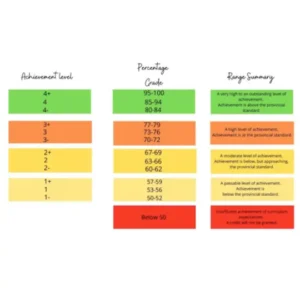The Ontario Student Transcript (OST) is an official document issued by public, Catholic, and inspected private schools in Ontario, as well as Ontario International Schools. It provides a comprehensive record of a student’s academic history, including successfully completed courses, withdrawals from courses that occurred five days or more after the midterm report card, repeated courses in Grades 11 and 12, and equivalent credits granted for work in non-inspected Ontario private schools or schools outside of Ontario. The OST is stored within the Ontario Student Record (OSR) and is retained for 55 years after a student leaves school.
If a student is currently enrolled in another school, whether public or private, and is taking a single course with KAI Global School, their OSR remains at their current school. Upon completing the course with KAI Global School, we will send a copy of the report card back to the student’s home school. Additionally, the completed course will be added to the ongoing list of courses on the student’s transcript.
It’s important to note that since September 1999, the Ontario Ministry of Education has mandated a policy of full disclosure. This means that all grade 11 and 12 courses attempted by students must be recorded on Ontario Student Transcripts.



